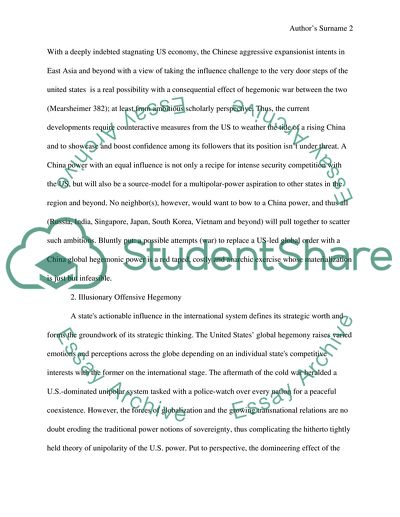Cite this document
(How Likely Is a Future Hegemonic War Between the U.S. and China Research Paper, n.d.)
How Likely Is a Future Hegemonic War Between the U.S. and China Research Paper. Retrieved from https://studentshare.org/politics/1793938-how-likely-is-a-future-hegemonic-war-between-the-us-and-china
How Likely Is a Future Hegemonic War Between the U.S. and China Research Paper. Retrieved from https://studentshare.org/politics/1793938-how-likely-is-a-future-hegemonic-war-between-the-us-and-china
(How Likely Is a Future Hegemonic War Between the U.S. And China Research Paper)
How Likely Is a Future Hegemonic War Between the U.S. And China Research Paper. https://studentshare.org/politics/1793938-how-likely-is-a-future-hegemonic-war-between-the-us-and-china.
How Likely Is a Future Hegemonic War Between the U.S. And China Research Paper. https://studentshare.org/politics/1793938-how-likely-is-a-future-hegemonic-war-between-the-us-and-china.
“How Likely Is a Future Hegemonic War Between the U.S. And China Research Paper”, n.d. https://studentshare.org/politics/1793938-how-likely-is-a-future-hegemonic-war-between-the-us-and-china.


